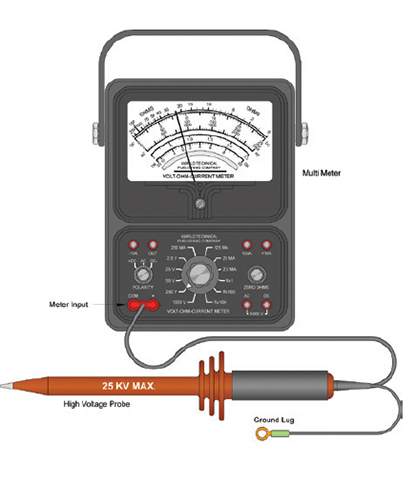Those of us who have worked with, or around, electrical equipment have witnessed electrical arcs. At the very least, we’ve seen the sparks produced when a relay or contactor switches off. This is easily observed by watching a motor starter with open contacts. When the motor turns on, the contacts close in a fairly uneventful fashion. However, when the contacts open, there is a bright, momentary arc produced which is visible to the naked eye. You may think that electrical arcs are just a common occurrence and nothing to worry about. But repetitive arcing can be very damaging to contacts over the long term, requiring periodic replacement of relays or their contacts. Electrical arcs can also pose a serious danger to personnel if they are not taken seriously and precautions are not put in place.
 The Cause
The Cause
The principal reason for arcing is the inductive kickback produced by a coil when it is de-energized. When power is disconnected, a coil naturally tries to preserve the current. It does this by increasing the voltage. In some cases, this increase reaches several thousand volts, which easily promotes arcing across contacts and through the coil itself. During this discharge, localized temperatures often become high enough to promote rapid erosion of the control contacts.
There are several factors that can promote electrical arcs including misapplication of components and dirt buildup. Over time, dirt builds up on electrical components, causing standoff voltages to decrease until an arc initiates. Then, either the arc energy blows the built-up dirt away and the component returns to normal operation, or the dirt burns, creating a carbon path on the insulating surfaces of the component(s), thereby permanently reducing the stand-off voltage. This reduction in stand-off voltage promotes more arcing, which causes more damage, rapidly forming a run-away situation.
The Cure
There are three basic methods which can mitigate inductive kickback: shorting, arc lengthening and switching management.
Shorting employs devices such as metal oxide varistors (MOVs) which provide an open circuit below a specified voltage rating and become conductive above that rating. Once the MOV is conductive, it can be used to short out the circuit, eliminating the kickback voltage before it ever becomes large enough to initiate the arc in the first place.
With arc lengthening, the arc itself is stretched to a point that the inductive energies can no longer sustain the reaction. Arc dividers are an example of these devices and are used to alter the physical characteristics of the arc over the sustaining threshold.
Switch management represents the cutting edge of arc suppression technologies and uses a high speed, solid-state switch element to counteract the arc. Usually a silicon-controlled rectifier (SCR) or a high-power transistor set makes up the switch element. Switching off at or near the zero crossing of the AC signal will substantially reduce inductive energies and the damaging effects of an arc can be principally negated.
Surge suppressors, crowbar circuits and effective grounding are additional methods to decrease the potential for injury to electrical components and personnel. For example, in a situation where an arc forms within a properly grounded panel, the hazard is safely contained and does little more than startle the technician. However, if the cabinet isn’t grounded, an inadvertent arc may form through the person standing in front of the box, which can cause them significant harm or even death.
The potential for destructive and even deadly arcs is ever-present in electrical systems. Preventative measures that provide adequate protection should always be considered beforehand and never be relegated to an afterthought. For more information on electrical arcs and ways to reduce their damaging effects, check out our Electrical Arcs whitepaper here.
*Originally published: Nov 7, 2018

